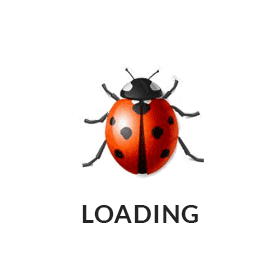

SPIDERS
DUSTMITES
FLEAS
TICS
CENTEPEDES
CATERPILLARS
Spiders have colonized all environments in the world with the exception of salt water. Even in Sri Lanka we have many species of spiders in a wide range of environments. Spiders play a significant role in the biological control of invertebrate pests.
All spiders spin silk, produced from specialized glands at the tail of the abdomen called spinnerets. Frequently many threads are spun together, each one being perhaps less than one hundredth of a millimeter in diameter. The liquid silk pulled into threads is spun together. The liquid silk pulled into threads dries chemically, rather than due to the action of air and weight for weight is considerably stronger than steel.

Fleas are vectors of Bubonic Plague, carried from rodents to humans when they suck our blood
In an epidemic in Europe in the 14th Century 25,000,000 people died from the disease
That was over one-third of the entire population of that continent
This epidemic was part of a worldwide epidemic 1347 to 1351 over 75 million people died around the world
It epidemic reached Sri Lanka in 1367, killing thousands
Initial inspection to identify the breeding and harboring areas
Recomendation to improve sanitation
Recomendation to prevent ticks entry
Design strategic ticks management plan
Implemetation of the ticks management stratergy
Follow-up and continues monitoring process
Worldwide there are estimated to be 8,000 species of centipede of which 3,000 have been described. Centipedes have a wide geographical range, reaching beyond the Arctic Circle. Centipedes are found in an array of terrestrial habitats from tropical rainforests to deserts.
Within these habitats centipedes require a moist micro-habitat because they lack the waxy cuticle of insects and arachnids, and so lose water rapidly through the skin. Accordingly, they are found in soil and leaf litter, under stones and dead wood, and inside logs. Centipedes are among the largest terrestrial invertebrate predators and often contribute significantly to the invertebrate predatory biomass in terrestrial ecosystems
Caterpillars are the larvae of butterflies and moths. Many are major pests but several merely make us curious as to what they are doing. There are many types of caterpillars and they feed in or on a broad array of trees and shrubs. Some are simple leaf feeders and others bore in tips or are leaf miners. Most feeding by caterpillars takes place in the later instars as they approach maturity. Small caterpillars are easier to control.
Every situation is unique, there is no single spider control program that will work in all cases. That’s why you need a ‘Exterminators Pest Spcialist’ with the experience and the tools to find the right one for you. Exterminators Caterpillar Control begins by identifying the breeding and harborage areas. Combination of methods and tools will be carried to treat fly infestation.
Initial inspection to identify the breeding and harboring areas
Recomendation to improve sanitation
Recomendation to prevent caterpillar entry
Design strategic caterpillar management plan
Implemetation of the caterpillar management stratergy
Follow-up and continues monitoring process
Copyright 2019 Exterminators . all right reserved - design by xiteb